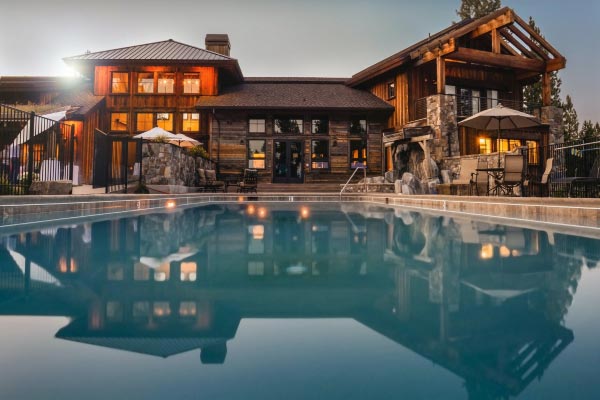
When should you replace the roof on your rental property? This is not a question landlords think about often or even like to think about at all. Firstly, roof replacement is costly, and owners usually want to put off replacing a rental property's roof for as long as possible. Secondly, a building's roof is not always in the landlord's face like other parts of the building, explains BlueMountainMGMT.com. As a result, roof repair issues do not have the same sense of urgency as problems like a burst pipe, for instance.
Since most landlords seldom pay attention to their property's roof, a lot of property owners are unable to tell when the home's roof is due for replacement. That is because if you are not inspecting a roof and its structures regularly, it can be hard to tell the extent of any damage. Most major roof problems manifest so subtly that it is easy to mistake them for small repair issues. This is why when the problem finally becomes obvious; it usually costs a lot to fix.
Any sort of damage to a home is progressive; left to itself it will advance and affect adjoining parts of the building. And this is particularly true for a home's roof.
Damaged shingles, if not fixed immediately, will lead to damage to the underlying structures of the roof. This will, in turn, lead to damage to the home's walls, insulation, ceiling and, eventually, foundations. Roof damage often progresses from minor costs, like a single damaged shingle, to major repairs to a home's structures. But you can avoid this happening to your property by learning the telltale signs that your property's roof needs replacement.
Even though roof replacement is a significant expense, avoiding it will only lead to even bigger spending. The smarter approach is to be aware of the issues and be timely in fixing them. Early detection of roof problems prevents avoidable damage to your rental property. And here are the best ways to tell if your rental property's roof is nearing the end of its useful life.
A dip in the surface of the roof is a sign of imminent collapse. A sagging roof means the underlying supports have given way. This can be due to problems with a home's foundations. But most commonly, the problem is caused by weakened attic decking. Sometimes it is also caused by the excessive weight of snow. Whatever the source of the problem, a bowing roof is a cause for concern.
If a roof leaks again shortly after it has been repaired, it might be an indication that the real problem has not been addressed. A roof which leaks persistently is probably weak and needs a more comprehensive solution than just fixing a leak. If the roof is not changed, it may result in extensive damage to the property.
Roof shingles may buckle or curl as a result of extreme and rapid changes in temperature. Too much moisture will also cause asphalt roofing materials to curl. A third reason why this problem happens is movement in the roof sheathing. When shingles start to curl or buckle, the roof needs replacing.
Flashing plays a critical role in keeping water from penetrating a home. It makes the joints and valleys of the roof impervious to water. Over time, however, flashing can become weak and start to fail. When this happens, the interior parts of the roof can get damaged very quickly.
Roof failure often manifests as sunlight in the attic. Ordinarily, it should not be possible for the sunlight to peek into the attic. When this starts to happen, it means there are missing or broken shingles on the roof. And if light can get in, rain, snow and pests will also get in.
Moss and algae weaken the roof; if they have taken hold, it is clear that the roof should be replaced. Moss retains water on the roof surface, and the tiny roots of the plants penetrate into the roof's shingles. Algae dislodge roof granules by weakening their binding materials. This allows water to wash away the roof's protective barrier.
Roof granules act as a protective barrier against the sun's heat, impact of driving rain and drifting snow. Over its lifetime, it is normal for a roof to shed granules. But when bald spots begin to appear on the roof, and the gutters are filled with granules, it is time to change the roof.
Roofs are expected to last between 20 and 25 years. When a roof begins to approach this age threshold, it may start to underperform. Even if it looks okay, the roof should be replaced, or it might give the property owner a nasty shock.